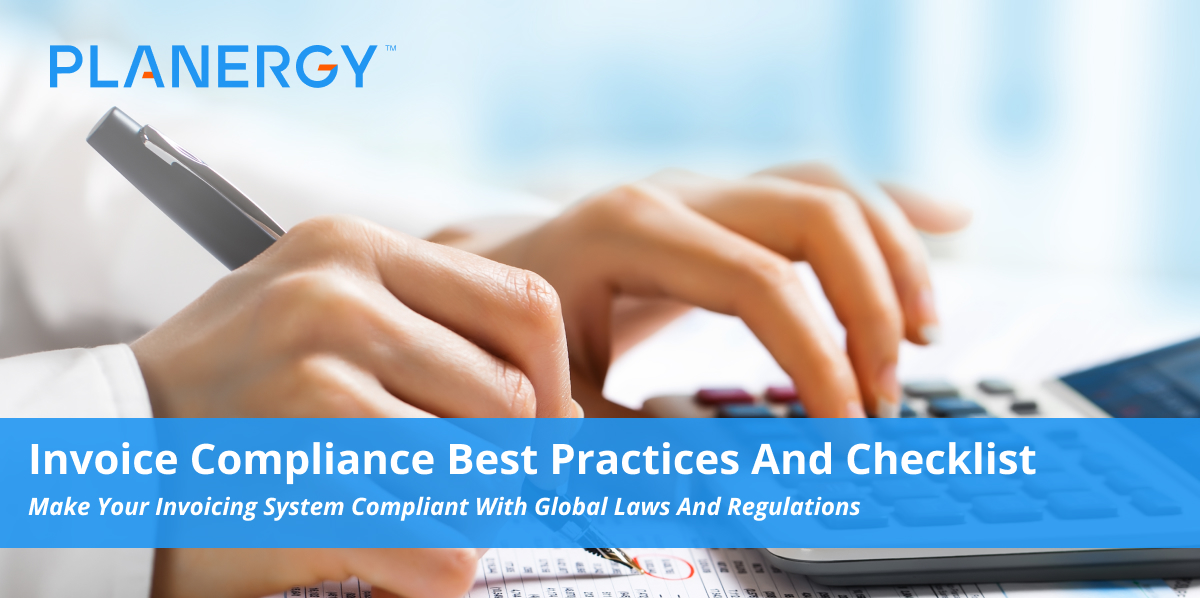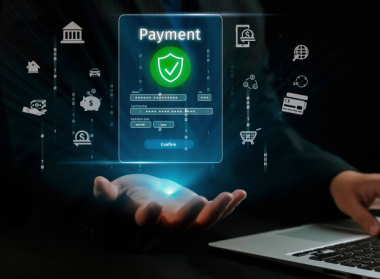Complying with global invoicing regulations is an arduous task for organizations of all geographies, industries, and sizes.
Despite moving towards a paperless, e-invoicing system to handle accounts payable invoices smartly and efficiently, organizations still face severe problems when they form partnerships with new vendors situated across geographies.
Each organization must prepare its accounts payable system to handle region-specific fiscal, trade, and legal regulations. Failing to comply with local laws and taxes-related formalities can result in additional costs for the business.
With an array of tax laws, specific requirements across invoice receiving, handling, and archiving regulations of different geographical regions, and distinct invoice formats, businesses have to face a plethora of challenges and concerns related to global legal and tax compliance.
In today’s article, we will dive deeper to understand the major details required for an invoice to be considered valid, the legal compliance needed for an e-invoice, and why companies need a specialized invoice compliance solution.
What is a valid invoice?
An invoice is a written document sent by a seller to its buyer after delivering goods or rendering services. The primary purpose of sending an invoice is to request payment from the buyer when it’s due.
An invoice is considered valid only if it contains the details required by the local regulatory laws. Besides, a valid invoice must also comply with country-specific sales or value added tax laws and regulations where the company operates. The value of goods and services mentioned in an invoice becomes a base for calculating, collecting, and remitting tax.
What are the major details required for an invoice?
Although each country may have its own invoice requirements, a typical invoice should possess the following critical details:
- The word “invoice” marked clearly at the top
- Business name, address, and contact details
- Client name, address, and contact details
- Project address (if it’s different from the usual business address)
- Invoice number
- Invoice date
- Payment terms and due date
- Description of services rendered or products delivered
- Quantity of products or services
- Amount due (in local currency)
- Taxes, if applicable
- Mode of payment such as ECH, credit card, or checks
It is pertinent to note that a few countries have stringent rules for invoice numbers, whereas other countries like the USA have flexible requirements.
Businesses can assign a number to an invoice in chronological order or choose unique identifiers for each customer, product or service, or geographical region. Assigning a unique number to each invoice helps quickly retrieve necessary information when required for filing GST or sales tax returns and auditing purposes.
Invoice Information Compliance Checklist
| Particulars | Mandatory in an invoice |
| Word “invoice” marked clearly | ✅ |
| Full name, address, and contact details of the seller | ✅ |
| Full name, address, and contact details of the buyer | ✅ |
| Invoice number | ✅ |
| Invoice date | ✅ |
| Payment terms and due date | |
| Description of goods or services | ✅ |
| Quantity of goods or services | ✅ |
| Amount due (in local currency) | ✅ |
| Taxes, if applicable | ✅ |
| Mode of payment such as ECH, credit card, or checks | |
| W9 form |
What is an e-invoice?
Many businesses have sent PDF invoices to their customers by email for many years. However, it’s just an electronic delivery of the old paper invoice. The buying organization has to receive the invoice, send it to various departments for cross-verification, and then initiate the payment. This entire process takes plenty of time and is prone to errors.
Also, when the accounts payable team is overburdened with the invoice processing of thousands of invoices, it can approve unauthorized invoices. During a heavy workload period, a few large companies even follow a policy of paying all invoices under a certain value without verification, leaving themselves open to invoice fraud.
E-invoicing is the process of exchanging an invoice between a supplier and a buyer in the specified standardized format. E-invoices contain necessary transaction details in a structured format. The buying organization can automatically import the invoice into its accounts payable system without any manual intervention upon receiving it.
With e-invoicing, the accounts payable team quickly and accurately processes the invoices to pay on time. Also, 100% transparency allows the approver to view the entire process at any time and ensure that no invoice is approved without adequate verification.
Not only this, but e-invoicing also lets organizations combat invoice fraud by validating if the vendor is approved, ensuring that an invoice has not been sent for approval and paid more than once, or individual line items don’t appear multiple times.
What is the legal compliance required for e-invoices?
E-invoicing compliance refers to the laws and regulations that both suppliers and buyers must comply with when sending and receiving electronic invoices in real-time or during the EDI transfer. Besides including the details mentioned above that are required for an invoice to be considered valid, organizations should account for the following things to ensure that vendor e-invoices are compliant:
- Authenticity of origin: The accounts payable team of the buying organization has to ensure that the e-invoices are sent by the invoice issuer (i.e., the seller) and not by someone who is impersonating them. It can be managed either by ensuring that both parties have a certificate that proves their authenticity or by implementing identification and authentication protocols.
- Integrity of the content: The AP team has to ensure that details mentioned in the document are secured and were not altered at any point after its issuance. Those events can be detected through an advanced digital signature where the data has been tampered with. If digitally-signed data is altered, it invalidates the signature.
- Legibility: When an e-invoice is exchanged in a structured format (XML or UBL), it should be accompanied by a readable document throughout the entire period of a document’s validity. Also, the e-invoice must be sent in the format which is acceptable in the buyer organization’s country. For instance, if a US organization sends an invoice to an Australian buyer, the invoice must be sent in Peppol format.
- Storage: Each e-invoice must be stored in its original format and made available for tax inspection and audit, according to the business’s country. For instance, in Saudi Arabia, the e-invoicing solution must allow companies to export invoices and associated notes to an offline local archive.
How can an efficient e-invoicing solution come in handy?
Today’s invoice compliance solution offers more than just multicurrency and multilanguage support. It possesses up-to-date knowledge of various countries’ e-invoicing regulations and quickly adapts to any new compliance challenge.
The modern invoice compliance solution provides a holistic approach to the complete invoicing cycle and makes the entire process virtually touchless by integrating with the ERP system.
Faster invoice processing
According to the Ardent Partners’ Accounts Payable Metrics that Matter in the 2021 Report, nearly 60% of businesses have adopted eInvoicing solutions.
An efficient e-invoicing solution allows an organization to timely process hundreds and thousands of vendor invoices with minimum errors and omissions, ensure big data management, and identify and verify each transaction with speed, ease, and accuracy.
Higher efficiency
A proper invoice compliance solution ensures appropriate controls and checks and eliminates manual processes that eat up the accounts payable team’s valuable time, increase frustration, or pose a risk. It frees up valuable resources to focus on collecting advanced insights, streamlining the entire procure-to-pay process, and helping the management make critical decisions.
Besides, an efficient invoice compliance solution also enables the Accounts Payable team to handle exception management better.
Systematic processing
The invoice compliance solution receives the invoice data in a structured format and maps it to the fields required for accounting according to the country-specific parameters. Then, it cryptographically verifies digital signatures to ensure data integrity and processes it for approval and payment.
3-way matching and approval
A good invoice compliance solution applies the 3-way matching process to highlight discrepancies in 3 important documents of the purchasing process – the purchase order, invoice, and order receipt and cross-verifies the information such as the number of units, cost per unit, total order cost, etc.
Once a discrepancy such as inaccurate quantity, incorrect price, damaged goods, etc., is located, the invoice is not processed for payment until the issue is rectified. It helps the company avoid overpayment or incorrect payment, and reduces operational costs by up to 50%.
Due compliance
An efficient invoice compliance solution always complies with all trade and legal regulations applicable to the buyer and the supplier. Simultaneously, it lowers costs associated with handling global invoice compliance.
Proper archiving through automation
A good invoice compliance solution also makes archiving easier and hassle-free. It allows the organization to set customized rules and automate digital organization processes to systematically store invoices and other documents for quick retrieval.
It slashes the audit prep time and supports even the deepest audits without breaking the bank for the organization.
Advanced security protocols
An efficient invoice compliance solution takes securitization seriously and integrates with leading single sign-on providers to secure connections and prevent potential data breaches. Remember, using an inefficient invoice compliance solution can result in a security breach and loss of crucial data (e.g., customer’s personal information), jeopardizing the organization’s image.
Invoice Processing Compliance Checklist
While processing the invoice and making it due for payment, the accounts payable team should comply with the following invoice processing compliance checklist:
| Particulars | Mandatory for invoice processing |
| Authenticity of origin | ✅ |
| Integrity of the content mentioned in the invoice | ✅ |
| Legibility (human-readable PDF attachment) | ✅ |
| Storage of documents in the original format | ✅ |
| 3-way matching (PO, Invoice, and Receipt) | ✅ |
Bottom Line
In the post-pandemic world, adopting an efficient invoice compliance solution can allow organizations of all scales to expand their operations, increase resilience, and simultaneously comply with regulatory requirements, while also managing their supply chain smoothly.
The new-age invoice compliance solution providers utilize machine learning in conjunction with artificial intelligence to provide new-age features and support to help organizations thrive in the “new normal” world.




